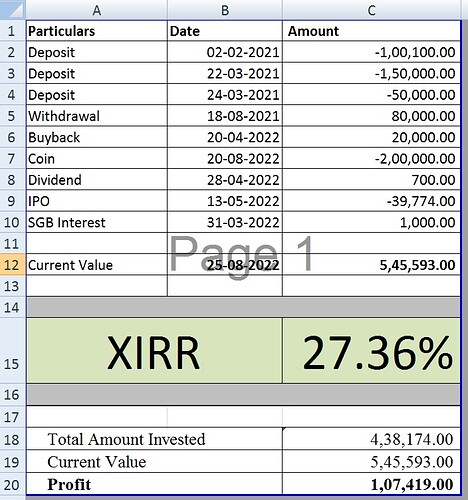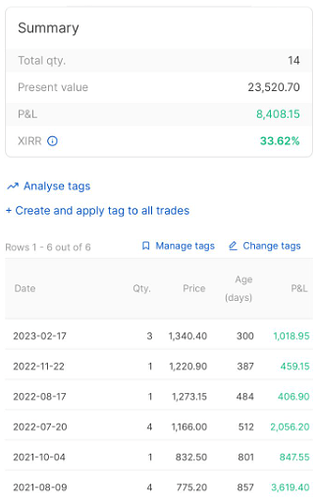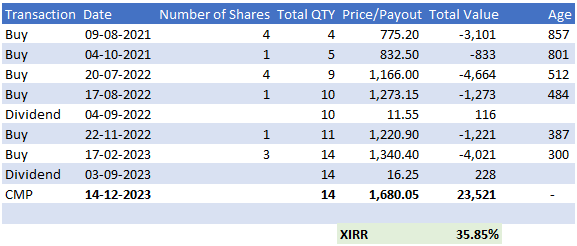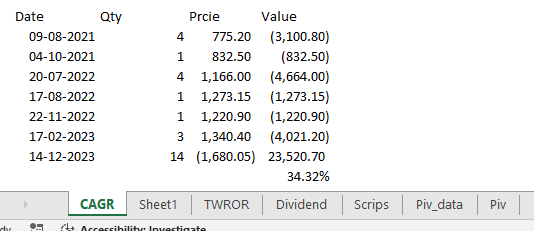Profit is one of the most important objectives of any Investor or trader. Calculating your profit can not only help you determine your level of success, it also provides information on how you can better your returns.
Profit being an absolute value, it doesn’t give you the right picture. Profit should always be seen in relative terms to the investment made.
In stock market, we frequently add and withdraw funds. Our investment levels won’t remain same all the time. Hence the most appropriate indicator to know your profitability is XIRR.
What is XIRR?
The Extended Internal Rate of Return (XIRR) is a single rate of return that, when applied to each instalment (and any redemption), yields the current value of the entire investment.
XIRR is a tool for calculating returns on assets where many transactions occur at different times.
Step-by-Step process to calculate XIRR in excel
-
Make a single column for all of your cash flows. Outflows, such as investments and acquisitions, will be marked as market negative, while all inflows, such as redemptions, will be marked as market positive.
-
Attach the transaction’s accompanying date to the next column.
-
Mention the prevailing value of your holding and the date in the last row.
-
In Excel, use the XIRR function, which looks like this: = XIRR (values, date, Guess).
-
Choose values for a series of cash flows that correspond to a payment schedule in dates, where the date columns represented the date when the first investment was made and when the cash flows were obtained. The Guess parameter is optional (if you do not put any value, excel use a value of 0.1).
How do we get details on the transactions:
-
Investments and redemptions:
Download the ledger statement in excel format from the time you have opened Zerodha account. Filter voucher type by bank receipts and bank payments. Bank receipts will be your outflows (Negative)
Bank payments will be inflows (positive). -
Dividend, SGB interest Received:
If you are maintaining your books of accounts then it becomes easier to get this data. I personally do it in tally prime. So I just have to download my dividend ledger. Since these are cash inflows, mark them as positive. -
IPO
Value of shares received in IPO will be included in the account value. So make sure you include this too. Figures should be in negative -
Buyback:
If you have received any funds from buyback, record this in positive. -
Mutual funds investment post August 1, 2022:
Since the amount is directly debited and credited to bank account this is now an additional item post August 1, 2022 -
Account Value:
This is found in the dashboard of Console. This includes the current value of all your holdings, realized profit, unrealized profit and so on. Basically if you close your account right away after closing all your positions and selling your holdings, this is what you will have in hand.
Note: Sometimes Zerodha Console shows wrong value. So have a rough idea about your account value. Usually they rectify is within 2 to 3 days.
This is how your excel sheet will looks like.
Let me know if I have missed anything.
And yes, if you do make use of this, let us know when you opened zerodha and whats your XIRR since then.



